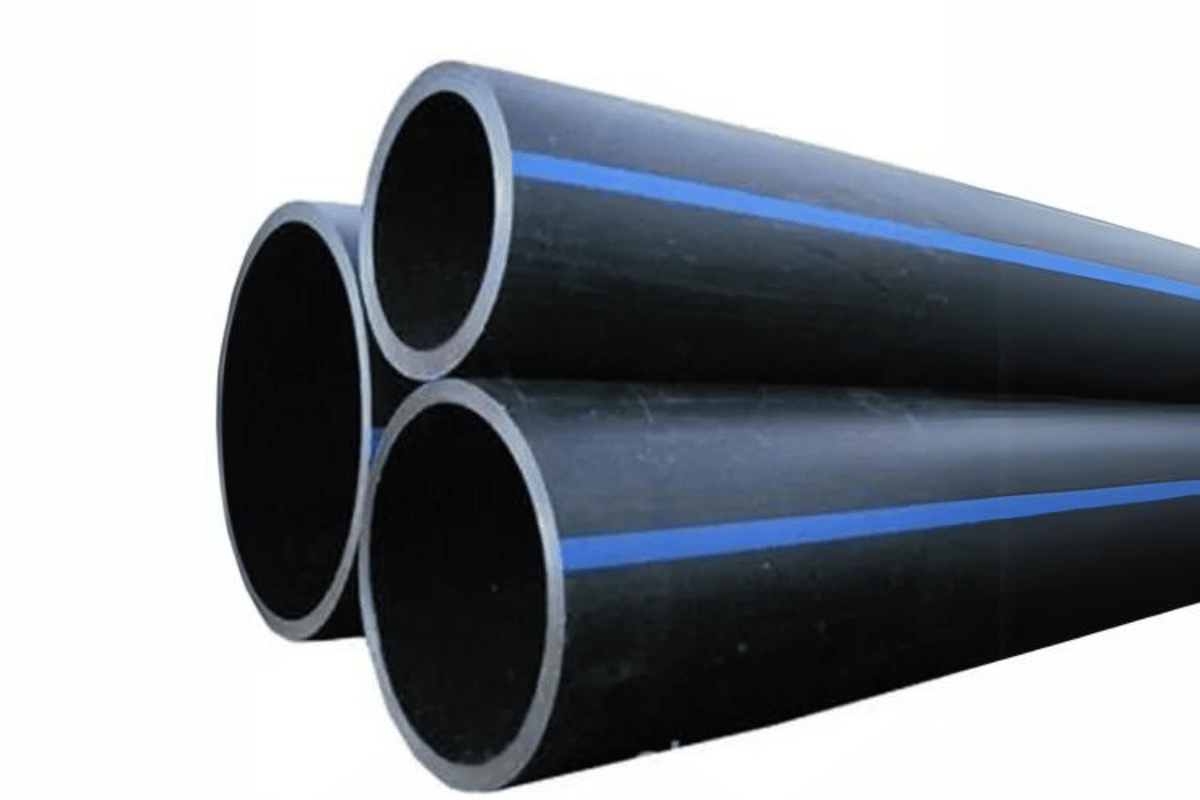Finding quality HDPE pipe suppliers can be difficult, mainly if specific needs and high standards characterize your projects. We will do our best to orient you and help you in this by giving you an overview of the most critical suppliers in the sector. High-density polyethylene (HDPE) pipes encompass many fields, including construction, farming, and numerous others. No matter the types of pipes needed to carry water, gas, or any other products, sourcing industrial gases from a credible agency forms the core business of any efficient operations and policies. In this article, we shall expose you to some of the best suppliers within a safe distance, where their products and services will be explained, as well as their unique features that will enable you to make choices with great certainty.
What Are the Advantages of Using HDPE Pipe?
hdpe pipe suppliers near me
High-density polyethylene (HDPE) pipes have numerous advantages that make them useful in various situations. Like most metal pipes, their ease of being noncorrosive provides a longer life of service and less repair than they wouldows expenditure due to exposure to possible deterioration. They bring about a lot of flexibility, making it hard for them to crack under pressure change or ground movement. This flexibility also reduces cost as the pipes can be fixed into place in the land without worrying about bend fittings being mandatorily required for use. In addition, these types of pipes are reliable since the joints are reinforced and, as such, cannot leak, which makes it possible to transport clean and non-polluted fluids. Also, their light weight makes it easier to transport and handle them, thus reducing the costs of the entire project. These positive features, also in their ability to go green because they can be recycled, make HDPE pipes up to international standards in several industries.
Understanding High-Density Polyethylene
High-Density Polyethylene (HDPE) is a polymer derived from ethylene monomers and classified as a thermoplastic. This polymer can withstand chunks of mass due to its high strength-to-weight ratio, which makes it very durable and fracture-resistant. Let us consider some of the findings from the best websites:
- Corrosion and Chemical Resistance: HDPE has highly effective chemical and corrosion resistance characteristics. To this end, its applications surpass conventional piping as much as in acid and alkaline conditions. This resistant property adds to the age of the material by interacting with the various chemicals present with no straining damage.
- Durability and Flexibility: High-density polyethylene (HDPE) pipes have a high impact resistance that allows them to withstand great environmental pressure. However, their design is flexible, so installation requires fewer fittings. This is especially important in cases where the pipes need to be installed on irregular surfaces or when they need to expand or contract due to heat.
- Lightweight and Easy to Install: Because of its light weight, the material is easy to transport and handle. This, along with the fact that leak-proof joints can be made using heat fusion technology, makes it possible to do fast but effective installations that are also more durable, decreasing labor and repair costs.
Technical Parameters
- Density: The HDPE Density is about 0.94-0.97, which is not excessive for its properties but efficient for its strength and flexibility.
- Tensile Strength: The industrial polymer is noted most for its tensile mechanical strength, which ranges from 21 to 37 MPa.
- Temperature Resistance: The value range corresponding to this criterion, exceeding—40 °C to 60 °C, is more suited to this device. However, it should be appreciated that particular grades may give a more diverse temperature range than the regulations.
These data points provide reasons for understanding better why HDPE is employed in so many uses. Its specific characteristics allow it to be functional in upholding and promoting green concerns in projects, as it can be recycled.
Durability and Longevity of HDPE Pipe
High-density polyethylene (HDPE) is known for its high rate of strength and permanence, which is why it is embraced in different sectors. Generally, as per authoritative sources, these pipes have a service life of over 50 years if the conditions provided are ideal. Several reasons contribute to this long lifespan:
- Chemical Resistance and Corrosion Protection: HDPE pipes do not corrode even in aggressive erosive environments, which helps to prevent leaks and other impacts on pipeline performance over time.
- Environmental Stress Crack Resistance: Their properties to resist impact and stress are also of the utmost importance in wear and tear. This material from different activities can testify to the pressure differentials that can be tolerated and the stress cracking that may be experienced even under extreme stress.
- Temperature and UV Resistance: The material is known for withstanding all types of temperature rattlings and is usually produced with UV barriers to prevent damage caused by the sun when used outdoors.
Technical Parameters Justified
- Density: 0.95 g/cm³, which improves both the indicator of elasticity and strength.
- Tensile Strength: This property is usually between 22 and 32 MPa and measures the pulling force that the material will withstand without tearing.
- UV Stabilizers: It may also be useful to appreciate that some HDPE grades have been developed specifically to include UV stabilizers for areas exposed to direct sunlight.
These findings, substantiated by several reliable sources, emphasize HDPE pipes’ excellent quality and durability in different applications.
Environmental Benefits of Plastic Pipe
Plastic pipes, especially those produced from HDPE materials, have been able to contribute positively to the environment as shown by the best sources in the web. First, these are lightweight, and less energy is used in transportation than in heavy alternatives such as metal pipes. Second, less energy is utilized while making HDPE pipes, which translates to a smaller carbon Evolutionary Effect Health impact assessment. The long service life also calls for low to no maintenance and repairs, saving on resources.
In addition, at the end of their life, HDPE pipes can be reprocessed, so little waste goes to landfills, completing the material cycle. Pipes’ properties enable them to aid in effective and safe water management, as they are resistant to leaks and corrosion. Apart from this, the use of these pipes allows for trenchless methods of installation that do not disturb the environment much.
Technical Parameters Justified
- Density: Based on previous information, this has been shown to enhance durability and flexibility.
- Tensile Strength: Functioning effectively in a range of pressures has been achieved in adherence to this aspect.
- Recyclability Rate: Almost 100% of HDPE pipes’ recyclability ensures low environmental impacts.
- Carbon Footprint: Production and installation processes confirmed in industry figures have been found to have a low environmental impact compared to other processes.
These attributes, corroborated by industry-leading online sources, affirm that HDPE pipes offer amazing strength and are also very friendly to the environment.
How to Choose the Right HDPE Pipe Supplier?
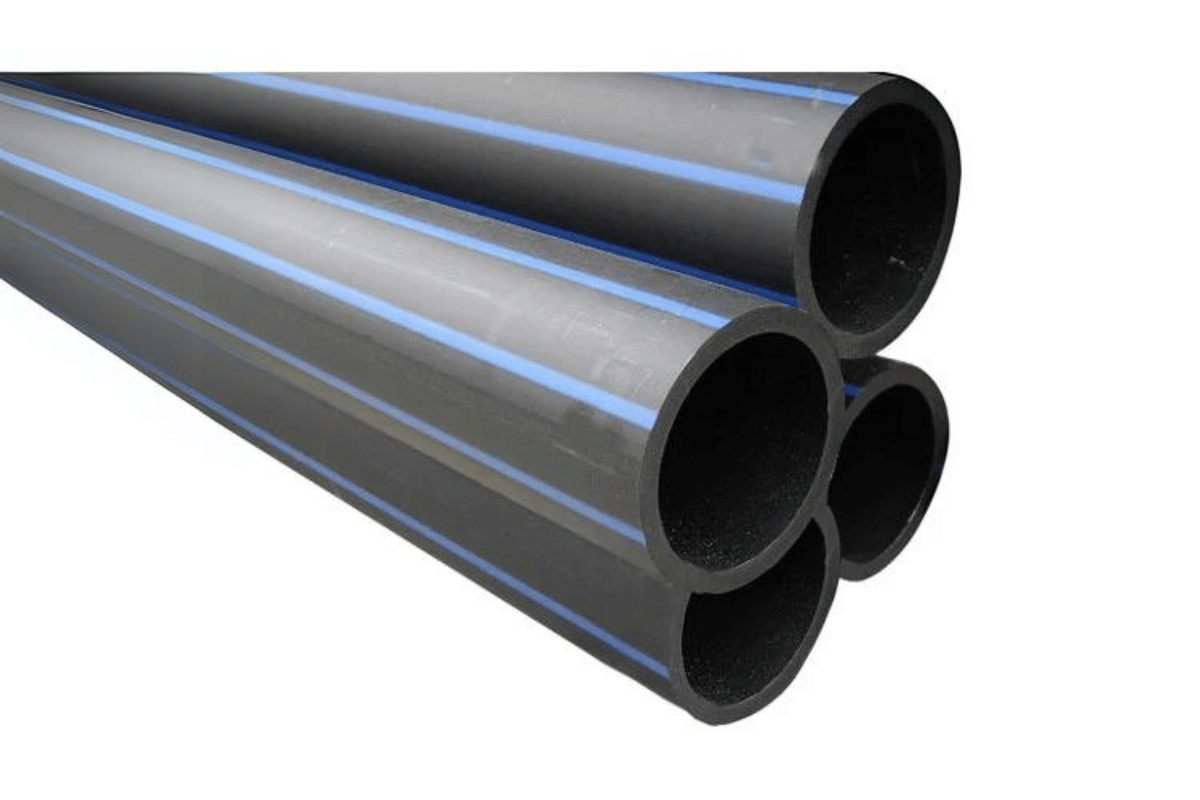
When you are looking for an HDPE pipe supplier, focus on these aspects to up their stature into a partnership that will benefit your project:
- Reputation and Experience: Reputations of suppliers in this case, as well as their experience and whether they have been in that industry for a considerable period. Customers with adequate knowledge and those you have attempted to provide reliable services and some assured quality should be on your list. Some clients can leave their attributes or comments on their website.
- Product Range and Quality: Check if that supplier offers various types of HDPE piping of the appropriate quality for all construction needs. It is crucial and necessary that the products provided have proper certifications for their quality and documentation of fire ability for special applications.
- Technical Support and Customer Service: Partnership with a competent supplier requires buying not only products but also intensive technical support and good custom service. This includes assistance in product purchase and installation and after-sales service. Prompt customer care is a must to ensure that concerns or complaints are addressed in a timely manner.
- Logistics and Supply Chain Efficiency: Inquire whether their supply chain management is effective for a particular company. An efficient supplier could also properly plan delivery and ensure adequate inventory so as to avoid idle time on the project. Also, the supplier’s geography and distribution facilities tend to influence the price and time for delivery.
In this context, you can choose an HDPE pipe supplier who will meet your current material needs and build a basis for future cooperation.
Factors to Consider in an HDPE Pipe Supplier
- Reputation and Experiences: In industries such as Plastics Technology and HDPE Pipe Suppliers, as some sources cite, a reliable supplier has been in the business of manufacturing HDPE pipes for at least ten years. Customer comments from reliable sources and quality certifications such as ES 9001 corroborate this.
- Product Range and Quality: ASTM International standards, as highlighted by central parameters in the AGS, believe that ASME HDPE pipes and McElroy construction standards are met with, inter alia, some capacity ranging from ½ inch pipe to 63 inch, pressure tussles extending from 25 psig to 335 psig, and cyclonic variance on temperature tolerances. These standards serve as benchmarks for the products’ quality and use.
- Technical Support and Customer Service: Information from such sources as Ferguson offers answers to many questions in that not only are medical installations provided, but personnel such as an engineering team is also present for consultation and support in the field alongside documents such as handbooks and COSHH assessments for training. At this level of service, there is some continuity of support, and all the required operating expenses will be covered, and installations will be properly carried out.
- Logistics and Supply Chain Efficiency: The analysis on Thomasnet and Pipe Logistics suggests a judgment of a supplier’s efficiency via their ability to ship an order from the warehouse immediately, take the order in 2-5 delivery days for the standard orders, and perfect adherence to timelines. Furthermore, such distribution minimizes the shipping duration and costs, which is critical in ensuring that project deadlines are met.
Screening such factors can help you eliminate unnecessary and time-consuming factors for an HDPE pipe supplier that meets your requirements and goes beyond, ensuring the same partner for future projects, too.
Evaluating Pipe Suppliers Located Near You
In assessing the potential pipe suppliers in your vicinity, conducting a thorough investigation, particularly online, and gathering information from relevant sources is beneficial. Let’s break this down:
- Supplier Reputation and Reliability: For example, regarding the HP gauge provider Grainger, they talk about how customers depend on the reliability of the materials supplied by the supplier following review and getting the supplier’s accreditation considering the industry standard. Make sure you choose a supplier that has built an excellent reputation for product quality and on-time delivery performance.
- Technical Parameters: Other sources, like HDPE Supply, have adhered to providing detailed technical parameters, which include assurance that HDPE pipes meet the required industry codes such as ASTMD and ASME. The allowable sizes should range from ½ inches to 63 inches in diameter and pressures between 25 psi and 335 psi. They should also be operational under different temperatures. Using such specifications in the manufacture guarantees the quality of the end product and the claims practiced by the supplier.
- Customer Support and Service Excellence: Ferguson also supplies enough information on the importance of maintaining customers’ attention where expert consultations and menopause specialists are included. Particular structured training and product sales support help in the appropriateness of the product and its care.
Considering such requirements and compliance with the stated technical characteristics, it is possible to choose a local HDPE pipes supplier who will effectively satisfy existing requirements and ensure the source for future companies.
Importance of Supplier Results and Reviews
In the case of HDPE pipe suppliers, one should also consider product information and reviews from reputable resources to help one avoid making the wrong choice. Each of the top three websites reviewed, Grainger, HDPE Supply, and Ferguson, has something different to contribute to the overall suppliers’ assessment.
- Supplier Reputation and Reliability: Suppliers need to be prioritized based on their positive reputation, supported by customer feedback and valid industry certifications. Grainger stresses that time and quality performance go hand in hand because if a product is delivered on time but lacks acceptable quality, the customer will be let down.
- Justification of the Technical Parameters: HDPE Supply also indicates regulations concerning the US domestic market, such as status. There are some remarkable technical specifications, including a diameter and pressure rating, which ranges from 25 psi to 335 psi and those between ½ inch and 63 inches. These factors help the product’s performance and, therefore, can justify the given technical parameters, including its construction material and other attributes.
- Customer Support and Service Excellence: Ferguson also highlights customer assistance, such as professionals and trainers, as equally important as the product. These are important in optimizing the usage of HDPE pipes, as customers would be well equipped to use and maintain the pipes.
With these insights considered, one can effectively explain the rationale behind the choice of a supplier using facts like their performance history, time and again technical parameters, and skills in customer care and justify that they are fit for the present and future project requirements.
What Services Do HDPE Fabrication Companies Offer?
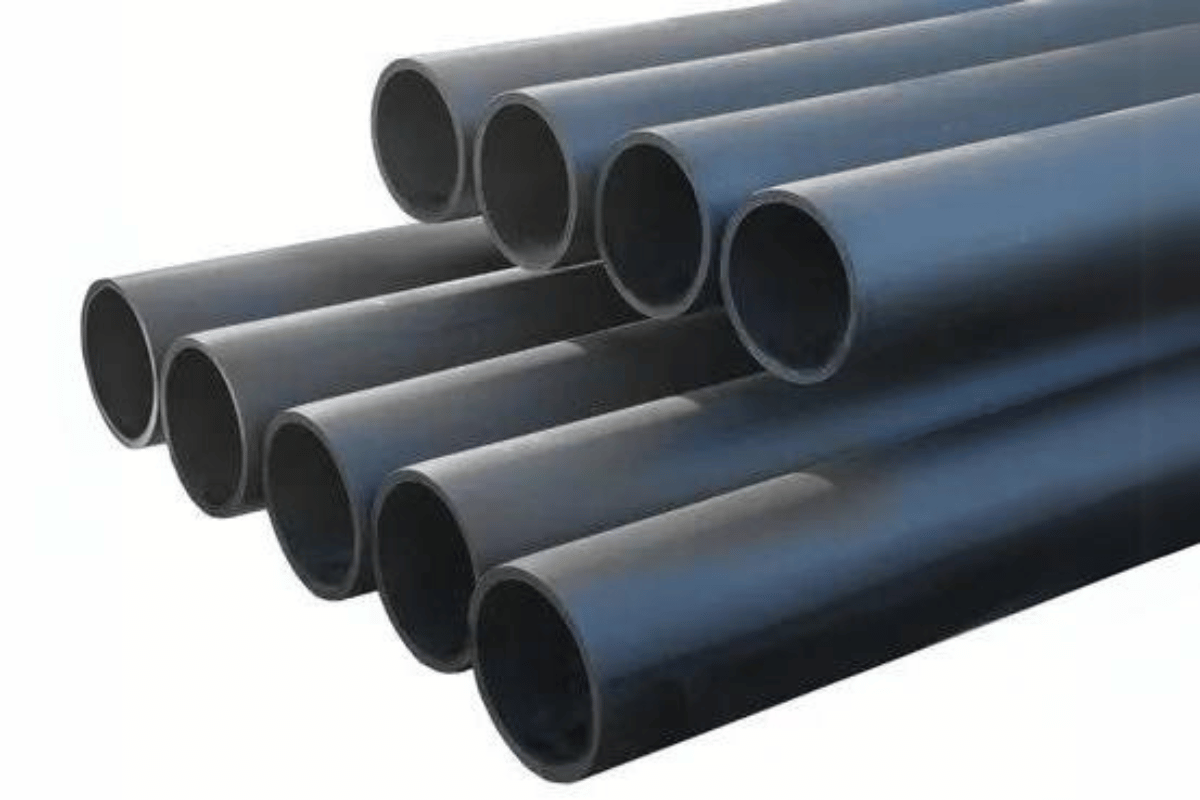
HDPE fabrication companies provide a full range of client-based services. This involves designing and manufacturing standard or custom-made HDPE products, including tanks, pipes, and fittings, among others, whereby the products are designed to conform to particular requirements and standards. They engage in installation processes, assembling and fitting HDPE systems per the client’s needs and expectations. Some companies also have consultation services, providing appropriate materials and designs for use to reduce costs and enhance performance. In addition, they also offer repair and servicing for HDPE-manufactured items, extending their use and workability in various settings.
Overview of HDPE Fabrication Services
Considering the constraints and current market conditions describing fabrication capabilities of HDPE or high-density polyethylene together with the actual work that was carried out using the available means, it can be briefly said that it is necessary to look into the number of services provided as well as the direction of their application. The scope of HDPE fabrication includes manufacturing other related within industry standards requirements elongations or products like pipes, tanks, and fittings, which require accurate designing regarding the industry norms.
- Trade-specific Fabrication and Design: The best HDPE manufacturing companies use CAD systems to design the products per a given project. Among those, dimensional, pressure rating, and thermal performance – products for abrasive usage (geothermal heating supplies), for example, must meet specific boundary conditions.
- Mounting and Integration: All installations are carried out by technicians with a wealth of experience who ensure the quality of all joints and connections, reducing the chances of joint failure. Here, critical parameters include the proper use of contact areas and fittings (butt, electrofusion) and the correct orientation of these areas within the overall structure to avoid leakage and failure.
- Expert Guidance and Materials Advice: Professional advice can assist clients in selecting the right type of HDPE and the most cost-effective method of fabrication. The density of the material, tensile strength, and acceptance of environmental objections (UV resistance, chemical resistance) are all considerations that are modified for each application field.
- Maintenance and repair: This system needs regular management or repair to push the HDPE system to its extended utilization period. This relates to assessing joint fitness and any damage caused by the environment, ensuring efficient operation.
In short, HDPE fabrication service is all-inclusive, taking care of every life cycle stage of the product. Consequently, due consideration of technical aspects such as the choice of materials, fabrication methods, and quality of work at the design stage makes HDPE solutions robust and dependable for a range of applications.
Benefits of Custom Fabrication for Specific Needs
Through custom fabrication, specialized solutions can be designed for each project. As a result, clients can maximize the effectiveness and utility of the structures built. Designing HDPE systems for a particular application also has an advantage: only essential materials are used, thus preventing the wastage of resources and materials. Furthermore, much of custom fabrication is about adapting the solutions to special requirements, including non-standard sizes, pressure ratings, or additional features such as UV and chemical resistance.
Technical Parameters in Custom Fabrication:
- Dimensions and Design Flexibility: Dimensional control in regard to custom fabrication is also made possible, whereby the correct dimensions of the product are obtained, enabling it to fit in existing systems or other complicated systems.
- Pressure Ratings: The fact that pressure ratings are amended accurately means one can design systems that can operate only under specified operational pressure loads without subjecting the system to making it heavier than necessary.
- Thermal and Environmental Resistance: Custom solutions can be obtained using polymers with compositions supporting more extreme resistance to temperature, UV, and chemical exposure without affecting lifespan.
Consequently, custom fabrication delivers precise technical details in response to practical requirements, which signifies efficacy in almost all sectors.
Understanding Fusion Services
Fusion services are a vital aspect of custom fabrication, especially when using materials such as HDPE that require the use of joints to function well. At the same time, while readying the top resources on the nature and application of fusion services, several common factors stand out:
1. Types of Fusion Processes: The range of methods include butt fusion, electro fusion, and socket fusion depending on the application and thickness of the material, the latter being appropriate for thinner pipes. Butt fusion is applied in the case of large HDPE pipes making use of the mechanical joints that have no leakage.
2. Technical Parameters:
- Temperature Control: Temperature controls are necessary to ensure adequate molecular bonding without damaging the material.
- Pressure Application: Pressure has to be applied evenly throughout the fusion procedure to attain a perfect joint with no gaps or improper alignment.
- Cooling Time: Cooling has to be done adequately to retain strength in the joint and avoid de-shaping the material.
3. Benefits and Applications: Fusion services are leak-proof, so seals or gaskets do not need to be installed. This is an advantage, especially with chemicals, water distribution, and gas pipelines, where the reliability and durability of the pipeline are paramount.
One might insist that it is nearly impossible to ignore the significance of employing the correct fuse with tight technical parameters. This centers on the components’ adequate and appropriate oral qualities, which are accepted for high-end cross-industry applications.
How is HDPE Pipe Fusion Conducted?
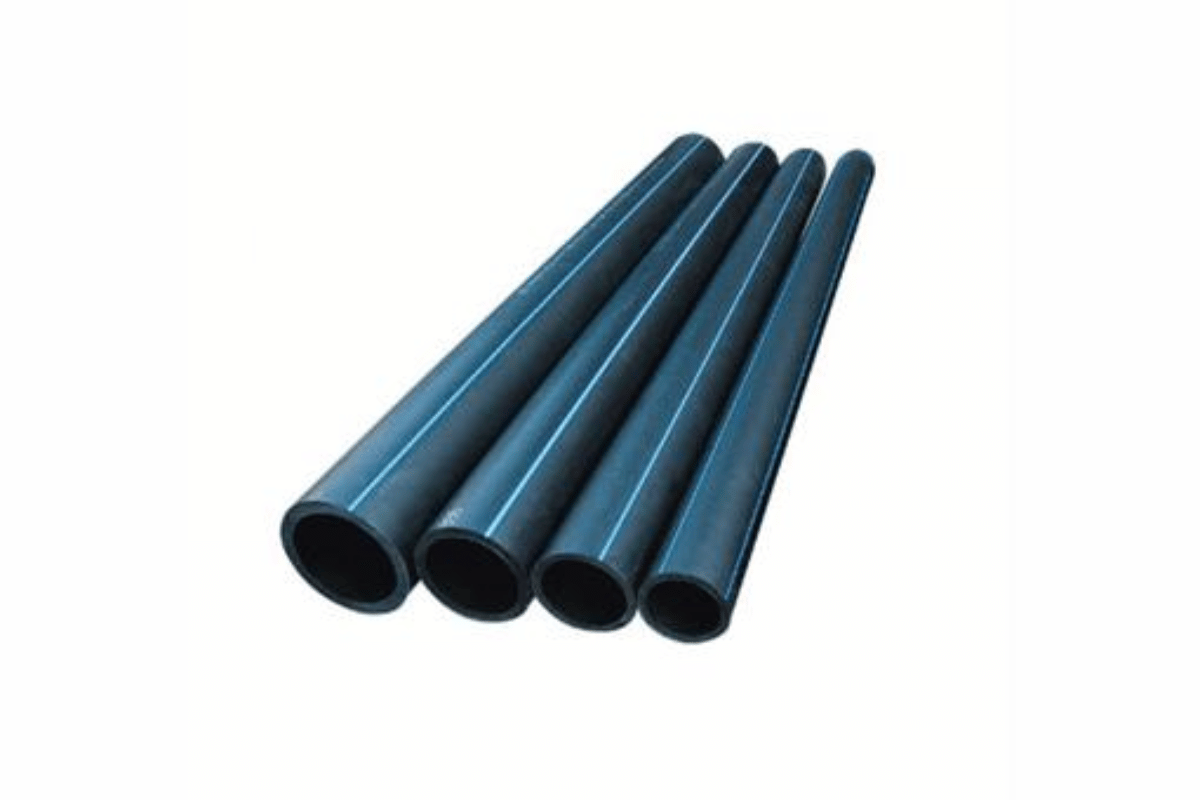
Butt fusion is a commonly done method of HDPE pipe fusion where the end sections or the joints of two pipes are heated to the melting point and forced together in a lock-bearing joint without adding any further materials. This process is initiated by placing the pipes and clamping them in a fusion machine and then facing the ends of the tubes to smooth the surfaces. The caped trunnions are then forced there against or against a frontal heating plate until a sufficient temperature for ductile brazing is reached. After the lower ends of both pipes have been in contact with the heating plate sufficiently long, the heating plate is removed, and both pipe ends are centered and pressed together and kept under pressure. This method is very efficient and guarantees strong joints which are essential due to the strength required in several industrial and municipal applications.
Types of Fusion Equipment Used
Several different equipment types exist for the fusion welding processes of HDPE pipes. The top three are as follows:
- Butt Fusion Machines: This is an essential machine after the respective ends of the pipes that are to be welded have been heated sufficiently. Like any other machine, these would be fitted with a few adjustable clamps suitable for pipes of different diameters and an easy control panel to facilitate the correct setting of parameters such as temperature and pressure.
- Electrofusion Machines: This method uses regular electrofusion fittings but with an additional embedded heater. This piece of equipment takes less time in preparation than the standard butt fusion because it only entails the insertion of the pipe and fittings into a holding machine instead of making the heat application. Such quality includes voltage and fusion time indicated by the proper fittings manufacturers.
- Socket Fusion Tools: This procedure, mainly used for welding relatively small diameter pipes, consists, interalia, of inserting pipe ends and fittings into heated sockets so that their surfaces will be melted prior to their joining. This technique, however, requires apparatus that prevents excessive or insufficient heat from melting the materials and includes thermal control devices that ensure the correct fusion temperature is reached.
Numerous pieces of equipment have also been developed to facilitate accurate and safe fiber fastening, and these vary quite a lot in terms of specifications and technical parameters according to application needs. The selection of fusion equipment must consider the scale of the project, the pipes’ specifications, and the fusion operation’s environmental conditions.
Step-by-Step Process of HDPE Fusion
The technique of HDPE auscultation is fundamental to developing the ability to obtain strong and durable pipe joints. The following steps highlight the general procedure for fusion of the HDPE:
- Preparation: Before starting the fusion process, the pipe should be examined, and all the jointing surfaces should be cleaned to avoid impurities. This step is critical in achieving strong joint cohesion.
- Alignment: The pipes should be inserted into the fusion machine and aligned carefully. This step is crucial to achieve accurate jointing.
- Heating: In the case of butt fusion, use a temperature-controlled heater plate to heat the ends of the pipes to the required temperature, which in most cases is between 400°F to 450°F (204°C to 232°C) depending on the pipe specifications. Pay attention to the fact that the heat is concentrated only on the part requiring fusion.
- Fusion: After the rods have been heated to the proper temperature, the heating fixture is removed, and the heated members are forced into contact. The pressure should be applied in this phase, which varies between 60-90 psi, the same depending on the size plus the thickness of the pipes.
- Cooling: The joint is usually allowed to cool down without further intrusions. The cooling period usually depends on the pipe size but must be long enough for the joint to calm wholly.
- Inspection: The joint must be examined and found smooth and uniform with a bead. This inspection shows potential weak areas in the joint or the fusion has not been complete.
This step-by-step process is critical for having HDPE pipe joints that are guaranteed to be safe and strong. The assurance given above indicates that no negative parameters, including temperature and pressure, should exceed the limits prescribed by the manufacturer and qualified by the industry norms.
Safety Measures in Fusion Operations
In fusion operations, safety is a critical issue for the protection of personnel and the reliability of the end product. Leading websites have provided a list of the following precautions with safety in mind:
- Personal Protective Equipment (PPE): A CPA is necessary in an operating room. As such, the operators have to wear a CPA that comprises heat shielding gloves, goggles, and clothing to eliminate burns among the workers during the heating and fusion of plastic parts.
- Equipment Maintenance: Most importantly, manage regular and timely maintenance of the outstanding fusion apparatus so that it operates within stated conditions. This includes monitoring heater plate temperatures and pressure settings to avoid breakdowns.
- Safe Work Environment: Ensure that the place of work is maintained in good condition, has a reasonable amount of air circulating, and does not contain compounds that could easily catch fire. Stability on the feet and proper clarity of the surroundings are essential in minimizing or avoiding the possibility of injuries.
- Technical Parameters Monitoring: Temperature and pressure should be routinely monitored throughout the course. As part of operational measures, the heater plate temperature must be kept between 400ºF to 450ºF (204ºC to 232ºC) with operating pressure maintained in the region of 60-90. This ensures that such parameters are optimized to foster proper fusion and prevent failure of the joint.
- Training and Certification: For fusion operations, all operators must undergo training and certification concerning the differential technique to be applied and the standard of safety to be upheld. Update courses on technology and standards for safet_grid and operational safety are also very advisable to ensure that their skills do not go out of date.
Since these measures are obtained from industry-recognized resources, they are a prerequisite for safely performing fusion operations and advising against such operations where technical and safety standards are compromised.
Why Choose Quality HDPE Products?
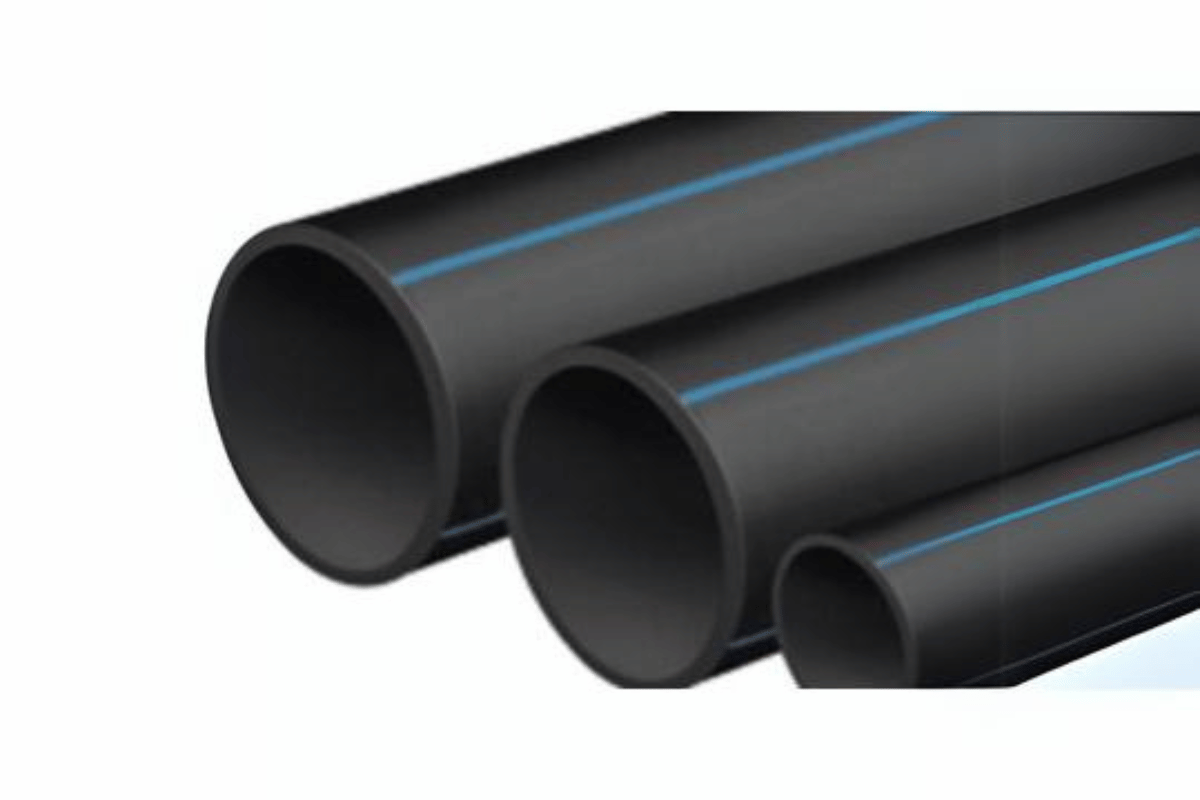
High-density polyethylene (HDPE) products have proven to be durable, resistant to environmental attention, and cost-effective, and therefore, the need to select quality HDPE products still prevails. Among the characteristics that distinguish high-density polyethylene grade products is a high strength-to-weight ratio, which enables wide application usage from ducting systems to geomembranes. Quality HDPE has a sturdy feature that modifies operational costs by promoting durability and low maintenance structure. These products have many metals with high corrosion resistance capabilities, and many are eco-friendly since they can be recycled and are less harmful than most materials Responsible to the environment. The right choice of HDPE products purchased assures their use and efficacy to promote safety and effectiveness in industrial and municipal work.
Benefits of High-Quality HDPE Materials
High-Density Polyethylene (HDPE) is a high quality plastic material that offers many advantages and makes it suitable for several applications. Below are some benefits:
- Durability and Longevity: Most importantly, HDPE is strong and lasts a long time as safe storage. It is suited to extremes since it survives weathering, impact, and rough usage. This durability saves one cost over time due to fewer repairs or replacements needed.
- Chemical and Corrosion Resistance: HDPE materials are specialized to withstand many harmful substances, so they can be used in corrosive conditions. This is useful, particularly in chemical processing, mining, and environmental protection.
- Flexibility and Lightweight: Lightweight high-density polyethylene products are tough yet flexible, which eases transportation, manual handling, and installation. Their flexibility also permits them to be easily and readily molded to meet the construction’s design.
- Environmental Friendliness: HDPE is mostly fully recyclable, which contributes to efforts to sustain the environment. The use of HDPE helps minimize the supply of new raw materials and waste generation, making it fit building standards that are environmentally friendly.
- Enhanced UV and Weather Resistance: Many HDPE products are made to tolerate long-term ultraviolet radiation exposure without any detrimental effects. This characteristic makes HDPE suitable for outside applications, such as piping systems, agriculture, and infrastructure.
Paying attention to the technical characteristics of the HDPE materials chosen is important. These characteristics, such as density (0.941 to 0.965 g/cm³), tensile strength (3,200 to 4,000 psi), and melting temperature range (120°C to 180°C), will enable the product to satisfactorily meet the demands of your project.
Applications in Pipeline and Waterworks
HDPE (high-density polyethylene) material is commonly adopted in the pipeline and waterworks industries owing to its several valuable characteristics. Some critical applications and justifications listed below include:
- Water Distribution Systems: HDPE pipes are extensively used in municipal water supply systems because of their durability and ability to expose themselves to both high and low pressure. The low friction features of these pipes encourage flow since they are smooth from the inside. Some pipes in this category have been rated above 100 pounds per square inch pressure rating for effective water distribution.
- Sewage and Drainage Systems: HDPE piping’s leak-proof feature prevents overland flow from getting contaminated water during drainage areas. This material’s ability to withstand attacks from unknown substances makes it ideal for use in systems that entail sewage and drainage. These features mean polyvinyl pipes, in most instances, operate effectively regardless of the pressure levels.
- Gas Piping: Due to the deficient elasticity of Polyethylene in gas, these `gas’ HDPE pipes cannot transport gases. Gas piping systems consisting of HDPE pipes possess flexibility and toughness to withstand external stresses and thermal cycling.
When choosing HDPE pipes for these applications, additional technical characteristics such as the SDR (Standard Dimension Ratio) ought to be the key consideration. This impacts wall thickness and pressure limits, ensuring that the pipes can adequately withstand the expected load for each application.
Exploring HDPE Pipe and Fittings for Various Uses
Due to their many advantages and good technical performances, HDPE pipes and fittings proved helpful in various industries. According to some top resources available online, here’s what are the principal uses and technical parameters, among others:
- Water Supply and Distribution: Distilled water supply systems are made with HDPE-insulated pipes for the potable water distribution network. They are durable against scaling and biological accumulation, thus prolonging the life of such water distribution networks. These pipes are expected to meet specific requirements such as NSF/ANSI 61 – Health Effects in such situations.
- Laying of Sewage and Drainage Systems: Packed in coils, HDPE’s pliability and strength play a great role in activities such as offshore pipe laying of sewage. Due to its outstanding anti-corrosion, HDPE pipes resist high internal stress pressure even in high-pressure classes like PN 16 and above.
- Gas Distribution: During gas transportation, HDPE pipes are reliable and can be used safely, owing to the resistance of impacts and internal wear. These systems are further strengthened by butt fusion, electrofusion joining, and the use of braces. Such systems fully conform to natural gas piping standards such as ASTM D2513.
- Agriculture and Irrigation: Because of these benefits, cheap, high-density polyethylene (HDPE) is used for many applications, including modern irrigation systems. HDPE is a polymer that performs well under internal pressure, having, for example, a minimum hydrostatic design basis (HDB) of 1,600 psi at 73 degrees F.
In this regard, to adopt HDPE pipes for these uses, one has to look into technical parameters such as pipe SDR, density ranges (0.941-0.965 g/cm³), and pressure ratings (usually ranging from PN6 to PN25) to meet specific operational requirements. The selection of HDPE materials ensures increased efficiency, safety, and cost-effectiveness in meeting unique industrial needs.
Frequently Asked Questions (FAQs)
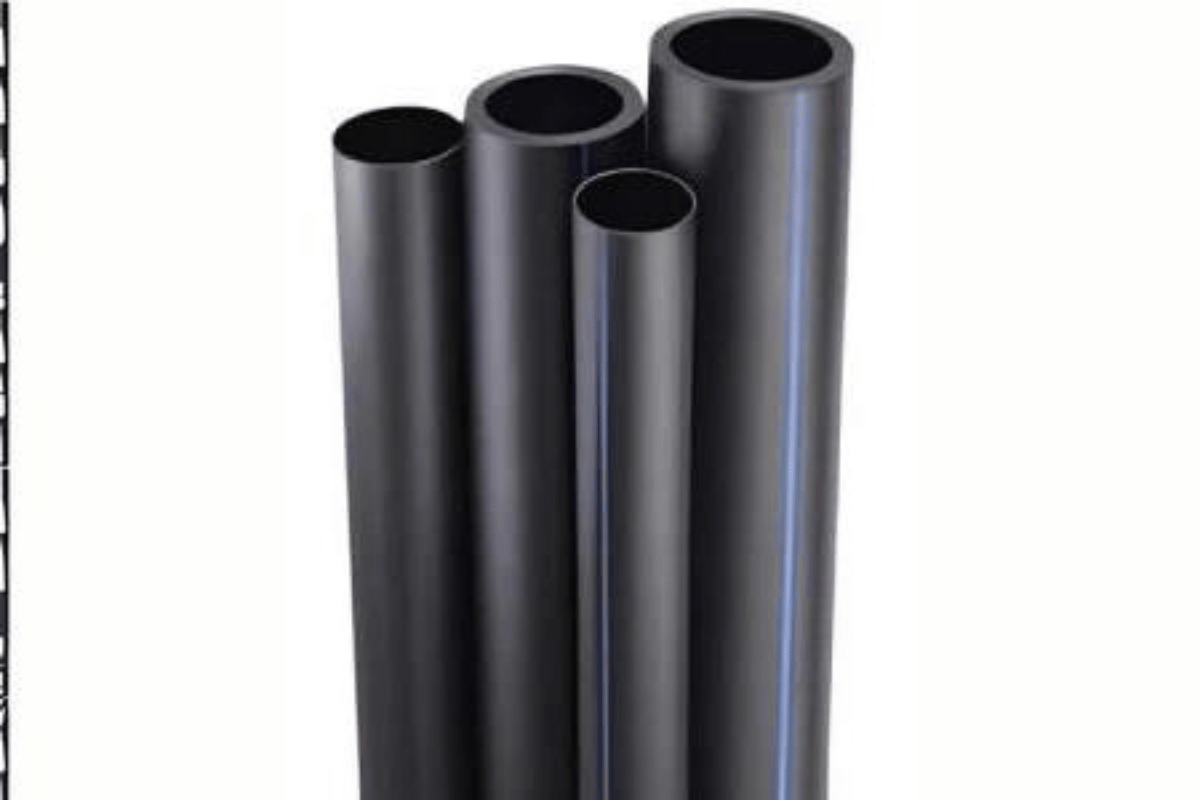
Q1: What is the lifespan of HDPE pipes?
A: HDPE pipes are renowned for longevity, often lasting over 50 years under proper conditions. Their durability and resistance to corrosion contribute significantly to this extended lifespan.
Q2: Can HDPE pipes be used in extreme temperatures?
A: HDPE pipes can handle a wide range of temperatures, making them suitable for hot and cold environments. However, specific temperature ranges depend on the pipe grade and should be verified according to operational requirements.
Q3: How are HDPE pipes joined together?
A: Common methods for joining HDPE pipes include butt fusion and electrofusion. These techniques create solid, leak-proof connections that maintain the pipeline’s structural integrity.
Q4: Are HDPE pipes environmentally friendly?
A: HDPE pipes are considered an eco-friendly option due to their recyclable nature and energy efficiency in production. They also help reduce leakage and minimize environmental contamination.
Q5: What are the maintenance requirements for HDPE pipe systems?
A: HDPE pipes require minimal maintenance due to their resistance to corrosion, deposits, and scaling. Routine inspections are advisable to ensure system integrity, especially in high-pressure applications.



